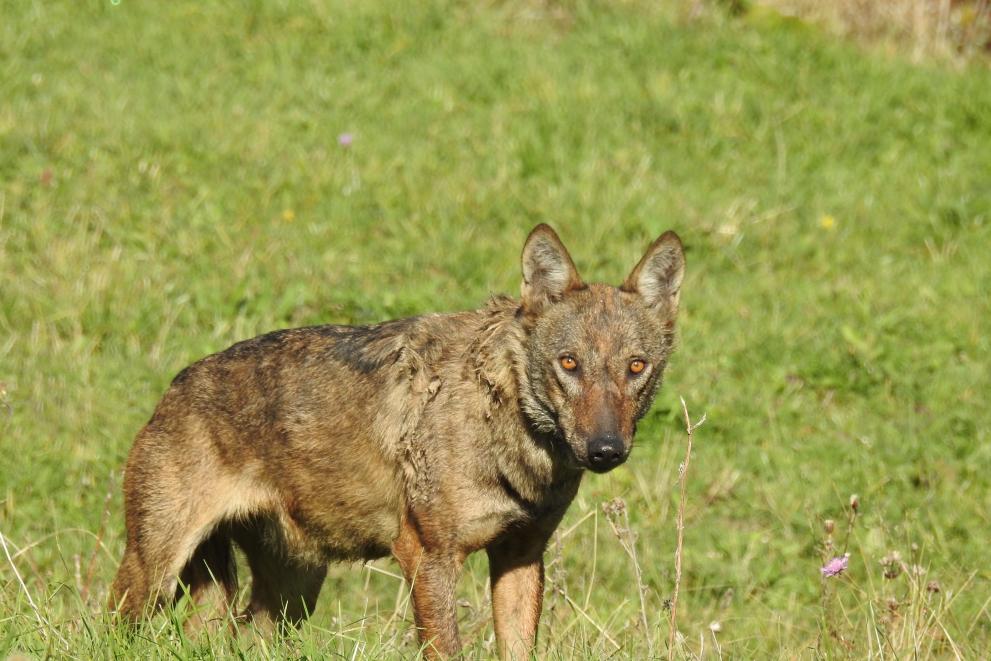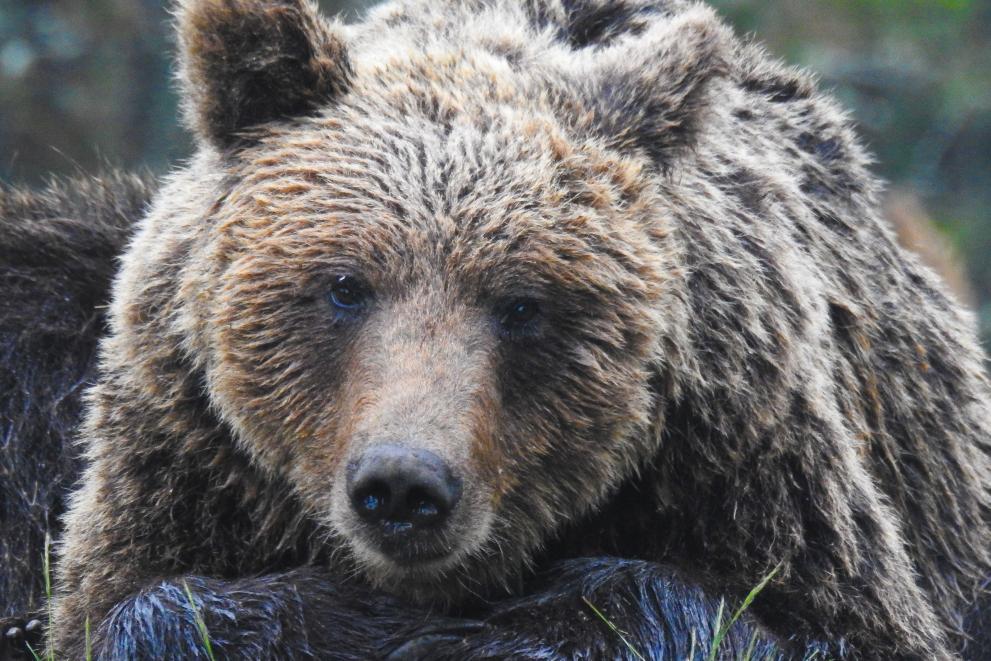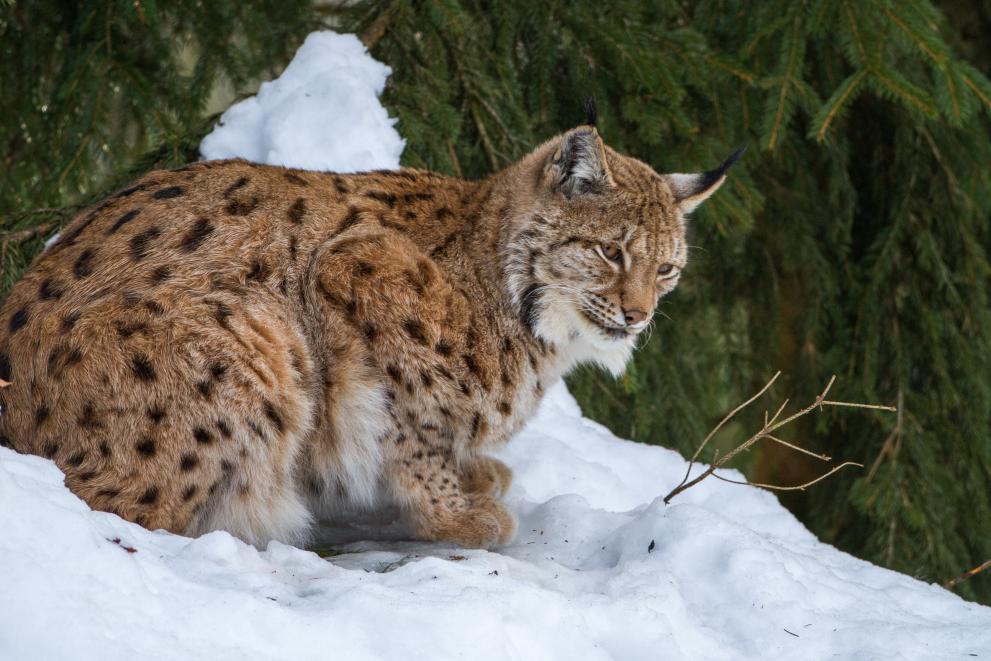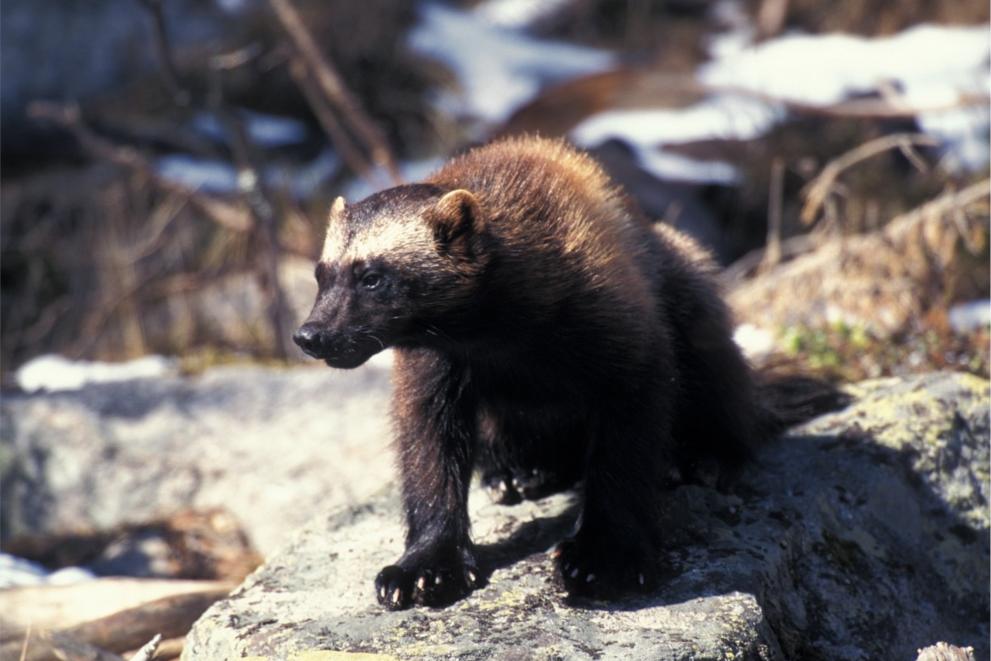Overview
The Commission has initiated a range of measures to conserve large carnivores in the EU. The recovery of large carnivores in the EU also contributes to the objectives of the European Green Deal’s EU biodiversity strategy for 2030. This is the EU’s plan to put biodiversity on the path to recovery by 2030. It contains specific commitments and actions to protect nature and reverse the degradation of ecosystems, building on existing nature laws.
In the EU
6 Large carnivore species are present in Europe: Brown bear (Ursus arctos), Wolf (Canis lupus), Eurasian lynx (Lynx lynx), the highly threatened Iberian lynx (Lynx pardina), Wolverine (Gulo gulo) and Golden jackal (Canis aureus).
All mainland EU countries host at least one large carnivore species.
Species Protection
To ensure the conservation of a wide range of rare, threatened or endemic animal and plant species, the Habitats Directive requires Member States to establish a system of strict protection, prohibiting namely deliberate killing, capture or disturbance of species in the wild, as well as the deterioration or destruction of their breeding sites or resting places. Under Article 16, the Habitats Directive allows for derogations to this system of strict protection, under certain conditions. Derogations should always be used as a last resort. Read this summary guidance document for more information.
In August 2024, the Nature Restoration Regulation entered into force, complementing the Habitats Directive. As a key element of the European Green Deal and the EU Biodiversity Strategy, the regulation sets binding targets to restore degraded ecosystems on land and sea with binding restoration targets for specific habitats and habitats for species to allow that the ecological requirements of a species listed in Annex II, IV or V of the Habitats Directive are met at any stage of its biological cycle so that it is maintaining itself on a long-term basis as to reach or maintain a favourable conservation status.
Large carnivore populations across Europe
Large carnivores have made a remarkable comeback in Europe during the last half century, which is a recognised conservation success made possible by protective legislation, more favourable public attitudes and habitat improvements. Having a common understanding of the distribution and size of their populations in Europe is therefore important to make decisions regarding their conservation and management.
Large carnivore distribution maps and population updates 2017 – 2022/23 provides the best available overview of brown bear (Ursus arctos), Eurasian lynx (Lynx lynx), wolf (Canis lupus), golden jackal (Canis aureus), and wolverine (Gulo gulo) distributions and population sizes at a continental scale.
Favorable Reference Values (FRV) for large carnivores in Europe
Favourable Conservation Status (FCS) defines the conservation status of a species based on its population dynamics, range, available habitat and future prospects. Favourable Reference Values (FRVs) for species are measurable parameters to assess progress towards reaching FCS in relation to the population and range components of the overall assessment. The study "Developing methodology for setting Favourable Reference Values (FRV) for large carnivores in Europe" proposes a concept for setting FRV for large carnivores. It explores conceptual approaches to the setting of FRVs and tries to connect them to well established concepts in conservation biology. Secondly, it proposes ways to operationalise these concepts. Thirdly, it illustrates the consequences of different choices for some real-world examples.
This study is not a Commission guidance document but provides a contribution to the wider and ongoing discussion on the FRV, within the Reporting expert group.
Stakeholder support
While the recovery of large carnivores can be viewed as a success, it has also resulted in the resurgence of conflicts with some stakeholders. This is mainly because large carnivores, in particular wolves, after an absence of decades (or longer) have returned to some parts of Europe, where the knowledge and the practices of living with them had been lost. This concerns, in particular (but not only) livestock predation in the areas where shepherding or other traditional systems to manage and protect livestock had been abandoned.
In response, and to support implementation of the Habitats Directive on the ground, the Commission has for many years been carrying out a range of measures to encourage and facilitate dialogue and cooperation between stakeholders and to promote best practices on coexistence. In this spirit, in 2014 and 2018 the European Commission supported the establishment of two types of dialogue platforms to promote ways and find solutions to minimize conflicts between human interests and the presence of large carnivores:
- EU Platform on Coexistence between People and Large Carnivores
- Regional Platforms on People and Large Carnivores
Information on the establishment of regional and local platforms are summarised in this toolkit.
Change of protection status of the wolf under the Bern Convention
As committed to in its response to the European Parliament Resolution of 24 November 2022 on the protection of livestock farming and large carnivores in Europe, the Commission published on 20 December 2023 an in-depth analysis on the situation of the wolf in the EU.
The In-depth analysis shows that the populations of the wolf have significantly increased in the last two decades. Today, there are more than 20,000 wolves in the EU with generally increasing populations and expanding ranges across all mainland EU Member States with breeding packs in 23 EU Member States. This is a conservation success, made possible by the protective legislation, more favourable public attitudes and habitat improvements. The continued expansion has in parallel led to increasing conflicts with human activities, notably concerning livestock damages caused by the wolf. Depredation has reached important levels, affecting more and more regions, both within EU Member States and non-EU Bern Contracting Parties.
In order to reflect this new situation, on 20 December 2023 the Commission tabled a proposal for a Council Decision to adapt the protection status of the wolf under the international Bern Convention on the Conservation of European Wildlife and Natural Habitats, to which the EU and its Member States are parties. Following the formal approval by the Member States in September 2024, the Commission, on behalf of the EU, tabled the amendment proposal to the Secretariat of the Bern Convention. The amendment was adopted on 6 December 2024 by the Standing Committee of the Bern Convention and entered into force on 7 March 2025
On 7 March the Commission tabled a proposal to align the EU legislation with the change of the protection status of the wolf under the Bern Convention. The proposal will have to be adopted by the European Parliament and the Council.
A press release and a Q&A are available.
Tools
To support Member States and other stakeholders, the Commission issued Guidance on the strict protection of animal species in 2021 inter alia by offering information and advice on how to address conflicts between strictly protected species and human activities. A dedicated Annex on the wolf has been included in the guidance.
The EU also supports Member States in ensuring coexistence with large carnivores through the available financial instruments, such as LIFE, the European Agricultural Fund for Rural Development (EARDF) or the European Regional Development Fund Interreg instrument.
Since 1992 the LIFE programme funded more than 170 projects dealing with large carnivores. You can find an overview of large carnivore-related LIFE projects here.
Documents & useful links
- Commission proposal to transpose into EU legislation the change of the protection status of the wolf under the Bern Convention (07/03/2025)
- Commission proposes to align the protection status of the wolf in EU legislation to the Bern Convention (Press release 07/03/2025)
- Questions and answers on the Commission proposal to align the protection status of the wolf in EU legislation to the Bern Convention (Q&A 07/03/2025)
- EU proposal to adapt the protection status of the wolf adopted by Bern Convention - European Commission
- The situation of the wolf (Canis lupus) in the EU: an in-depth analysis
- Commission proposes to change international status of wolves from ‘strictly protected’ to ‘protected’ based on new data on increased populations and impacts (Press release 20/12/2023)
- Questions and answers on changing the protection status of the wolf under the Bern Convention (Q&A)
- Proposal for a Council Decision for amendment of Appendix II and Appendix III of the Convention on the conservation of European wildlife and natural habitats (Bern Convention) with respect to the wolf (Canis lupus)
- Large carnivore distribution maps and population updates 2017-2022/23
- Habitats Directive: Guidance on protected species
- Letter Commissioners Sinkevicius and Wojciechowski to EU Environment and Agriculture Ministers on Guidance Document
Useful resources
Other specialist information sources
There are several specialist groups working on the topic of large carnivores as well as newsletters updating about the latest developments.
- The Large Carnivore Initiative for Europe (IUCN /SSC specialist group) has released their own LCIE Guidelines for Population Level Management Plans for Large Carnivores.
The IUCN SSC Human-Wildlife Conflict & Coexistence Specialist Group has published the following:
Guidelines on Human-Wildlife Conflict and Coexistence
Technical report: Key actions for Large Carnivore populations in Europe
- Carnivore Damage Prevention News is a newsletter addressing the challenges as well as the opportunities of coexisting with large carnivores by sharing knowledge of the broad range of existing adaptation strategies.
- The EU Large Carnivore Platform sends out its biannual newsletter informing about relevant policy developments, general news as well as events related to the topic of large carnivores.
Subscribe to the EU Large Carnivore Platform newsletter here!
Contact
For questions about EU environmental policy, please contact Europe Direct.
News

- News article
Talks in Brussels with the UN Environment Programme centred on advancing a competitive circular economy and enhancing water resilience.
- 3 min read

- News article
To help reach the target by 2030 and inspire a new generation of environmental stewards, the Commission has launched a new prize.
- 1 min read

- News article
This targeted amendment will align the Habitats Directive to the changed protection status of the wolf from ‘strictly protected' to ‘protected' under the Bern Convention, which entered into force today.





